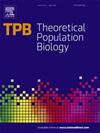Host control and species interactions jointly determine microbiome community structure
Abstract
The host microbiome can be considered an ecological community of microbes present inside a complex and dynamic host environment. The host is under selective pressure to ensure that its microbiome remains beneficial. The host can impose a range of ecological filters including the immune response that can influence the assembly and composition of the microbial community. How the host immune response interacts with the within-microbiome community dynamics to affect the assembly of the microbiome has been largely unexplored. We present here a mathematical framework to elucidate the role of host immune response and its interaction with the balance of ecological interactions types within the microbiome community. We find that highly mutualistic microbial communities characteristic of high community density are most susceptible to changes in immune control and become invasion prone as host immune control strength is increased. Whereas highly competitive communities remain relatively stable in resisting invasion to changing host immune control. Our model reveals that the host immune control can interact in unexpected ways with a microbial community depending on the prevalent ecological interactions types for that community. We stress the need to incorporate the role of host-control mechanisms to better understand microbiome community assembly and stability.

 求助内容:
求助内容: 应助结果提醒方式:
应助结果提醒方式:


